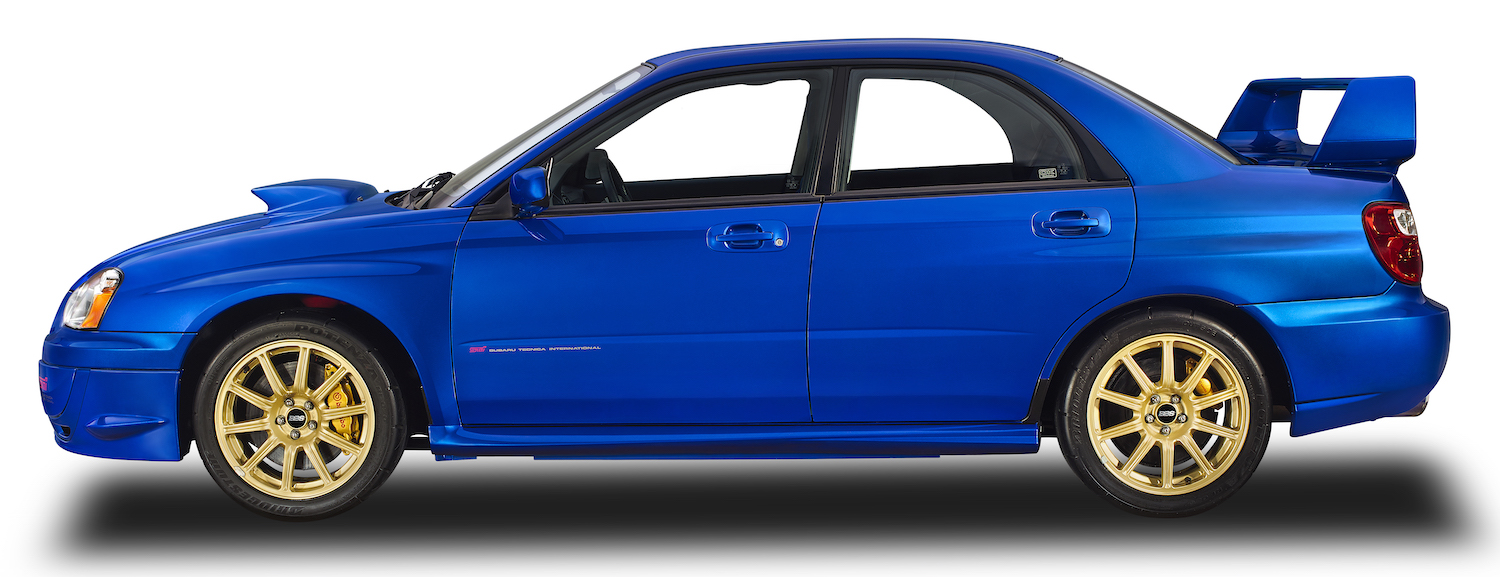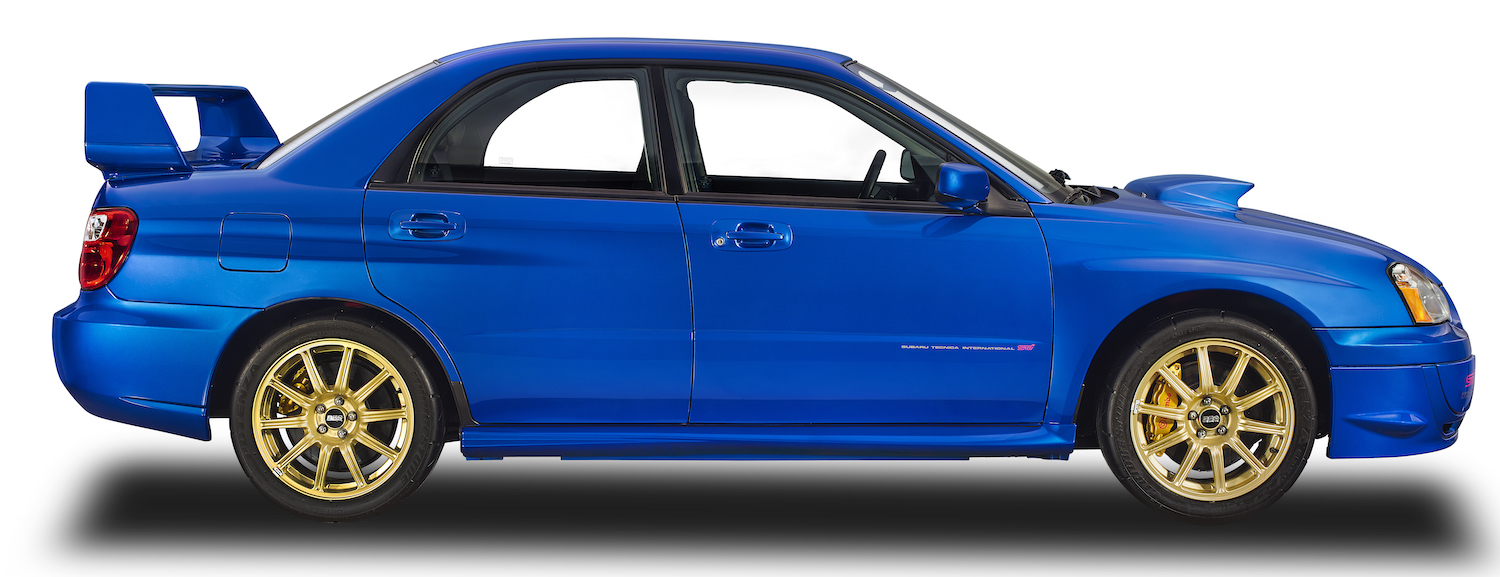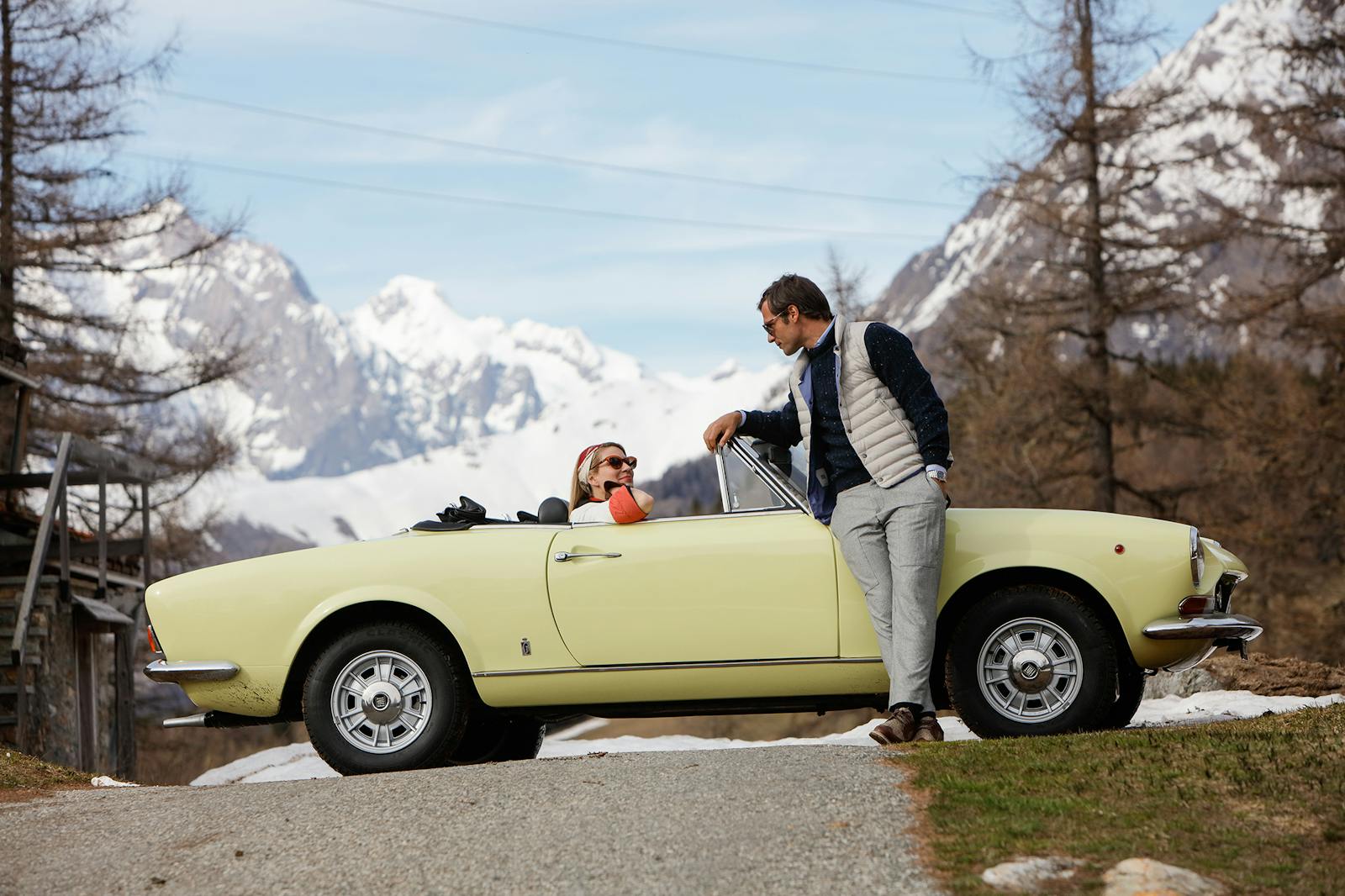Revenge of the rally cars: Subaru’s Impreza WRX STI and Mitsubishi’s Lancer Evolution are gaining market traction
Sooner than you think, the U.S. collector car world will experience the same turbocharged rush as the new car market did in 2002 and 2004. Expect the all-wheel-drive, rally-tested Subaru Impreza WRX STI and Mitsubishi Lancer Evolution to scream onto auction stages, spinning to a stop like a scene in Fast and Furious.
The WRX was already a legend when the Mitsubishi Evo crashed the party in 2004, prompting Automobile magazine to comment: “Second into space, but first on the moon!”
The 2002 WRX (World Rally eXperimental) and 2004 WRX/STi (Subaru Tecnica International) have gained weight and comfort over the past 17 years, but their original message of ferocious performance stuffed into a daily-driver package still rings true. While the mad-as-a-hatter Evo faded away in 2015, tuner/believers still challenge all comers with confidence. Rumors persist that Mitsubishi will revive the model, possibly as a hybrid.
The original 227-hp, 2.0-liter, four-cylinder, all-wheel-drive WRX sport sedan created a new generation of wild-eyed enthusiasts that’s grown wilder (like the cars) in succeeding years. The WRX was developed from Subaru’s 1992 236-hp Impreza WRX rally car, which won three World Rally Constructor’s Championships from 1995–97.
At only $23,995, the turbocharged WRX smoked its competition in the marketplace, proving both streetable and astonishingly durable. A press car I drove at the initial media launch passed through my hands again after 12,000 brutal miles. The brakes, clutch, steering, and gearbox were undamaged, and the cloth interior was unmarked.
The WRX was joined in 1994 by its big brother, the 276-hp STi, with blue-printed components, driver-controlled center differential, and carbon-fiber bracing. Numerous special editions followed, with World Rally Blue paint, ProDrive-blistered fenders, and gold wheels.
20200211173349)
20200211173414)
20200211171438)
20200211173332)
20200211173432)
The WRX and STi rally cars were revered worldwide before Subaru sprung the production WRX on the U.S. public for the 2002 model year, with the STI to follow for 2004. Subaru hoped to sell 10,000 WRXs in the first year, but 35,096 units roared out the door. It was available as a four-door sedan and later as a five-door hatch. There was no two-door WRX coupe in the U.S.
Mitsubishi’s Lancer Evolution VIII (lovingly known as the “Evo”) flashed onto U.S. screens in 2004 like the cartoon Road Runner. Evolved from seven series of Lancer rally cars dating back to 1992 (Roman numerals I–VII), it won four back-to-back World Rally Championships, from 1996–1999. Costing $27,795, the 271-hp Evo VIII was a werewolf in sheep’s clothing—a frighteningly aggressive four-door sedan.
The WRX and the Evo had a demonstrable impact on worldwide law enforcement. In Australia, smash-and-grab robberies using the Subaru forced police to drive the same WRXs as the thieves. UK police adopted the Evo ostensibly because nothing with the same level of utility could outrun it.
Megan Russell is the Marketing Director at IPD, the internationally known Volvo tuner in Portland, Oregon, which has expanded into work on vehicles from Subaru, Mitsubishi, and other manufacturers. At 30 years old and with 10 years of experience—including four years running independent tuner/restorer Portland Speed Industries—Russell is part of the exact demographic to grasp this trend. Oh, and she drives a vivid yellow 2003 Mitsubishi Evo VIII, expertly tuned by her boyfriend to 420 hp.
Russell says that though the STi and Evo both began on rally stages, their ultimate destinations differed. Each had roughly 275-hp turbocharged four-cylinder engines, all-wheel drive, and race-bred suspension. (In the 1990s Japanese manufacturers had a “gentleman’s agreement” to limit power to 283 hp—the real figure is reckoned to be as much as 50 hp higher.)
Both cars were good for 0–60 mph in 5 seconds, a 14-second quarter-mile at 100 mph, and a 140 mph top speed. However, the Evo’s potential is far higher when electronic limiters are removed, Russell says, and some say 175 mph is attainable (I’ve seen 159 mph and still gaining). The fastest example Russell knows develops 1700 hp, revs to 13,000 rpm, and turns a quarter-mile in 7.902 seconds.
“The STi attracts an enthusiast daily driver; the Evo is more of a race car,” she says. “The closed-deck heads on the 4G63 engine can hold more power than the STi EJ-series motor. Mitsubishi’s technology is ahead of the game, with Active Yaw Controls that take into account everything from steering angle, throttle control, speed and torque split from corner to corner.”





Bottom line is that you can get about 400 horsepower out of a Subaru STi EJ engine platform. “That’s the breaking point,” Russell explains. “You’re into serious money over that. But an Evo is good for 700 hp from the 4G engine, and that’s a huge difference.” Russell says both marques have die-hard devotees, but both offer sensational driving experiences and inspire fierce brand loyalty.
So if this market is going to assert itself in a world that increasingly welcomes newer-model performance cars, how many WRX/STi and Evo examples are there? Subaru built 281,692 WRX/STi models for the U.S. market from 2002 until 2018, with 2002 the highest production year at 35,069. WRX and STi sales were combined later and ranged from 8323 in 2010 to 33,734 in 2015.
Mitsubishi built 133,082 total Evos, but the first seven models weren’t sold in the U.S. Between 2003–2015 a total of 43,249 Evo VIII, IX, and X models were imported. There were 12,846 Evo VIII (2003–05); 8201 Evo IX (2006) and 22,202 Evo X (2008–15).
In 1998 Subaru built 400 wide-bodied 22B STis (never offered in the U.S.) to commemorate the company’s 40th anniversary and third WRC constructor’s championship. They sold out in 30 minutes in Japan and 24 more were built for export. Sixteen went to the UK, five to Australia and there were three prototypes. Russell reports that a low-mileage 22B surfaced in Hong Kong last year with an asking price of $250,000.
20200211171457)
Used Evo and WRX/STi prices range from about $20,000–$35,000 through contemporary production years. Plain WRX models from 2002–2005 can be found under $10,000, while STi models made after the Evo was discontinued can range from $40,000 as high as $89,000.
Hagerty featured the 2004–07 STi on our 2019 Bull Market List. When we checked in a year later to see how the STI market fared in that time, it had grown 20 percent, to the point where #2-condition (Excellent) cars are averaging $33,820. As of this writing, a #2-condition 2003 Mitsubishi Lancer Evo VIII GSR averages $24,000, and Evo VIII prices on Bring a Trailer line up with those figures. Most recently, a 17K-mile 2003 Evo VIII sold for $26,500.
Auction sales of WRXs and Evos have been scarce outside of Bring a Trailer; they are still below the radar, as their owners prefer to be. The very last 2015 Evo built sold for $76,400 in 2016 but the record sale to date was of a brand-new 2006 Evo IX MR, showing just nine miles. It sold in 2017 for $138,000—$100,000 over list price—and it foreshadows a future where it could resell for even more.
The fact that nobody ever thought these Japanese rally machines would be even remotely collectible, especially this soon, is a testament to their enduring charm, dazzling performance, and lasting rivalry.

20200211173450)
20200211171535)
20200211173507)









